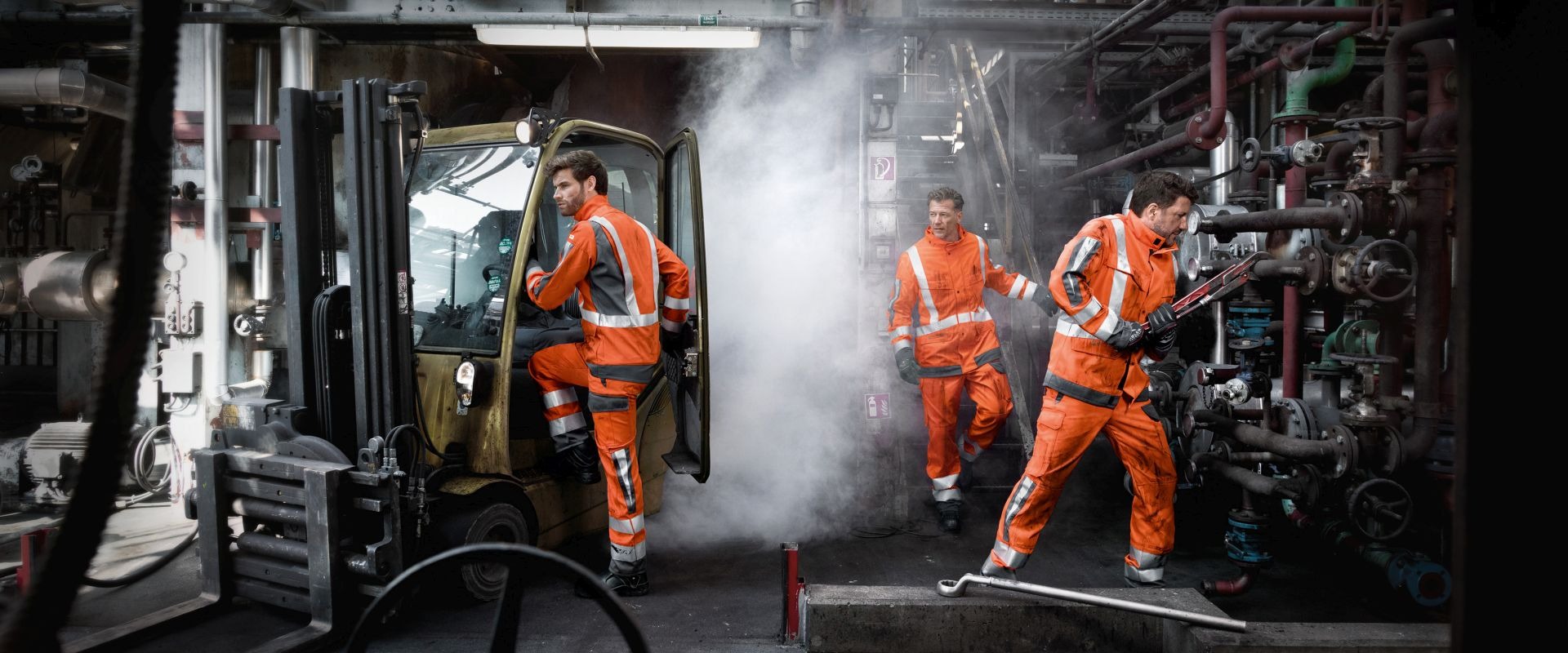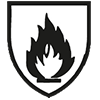
CLOTHING FOR PROTECTION AGAINST HEAT AND FLAMES
Clothing that meets the requirements of EN ISO 11612 protects the wearer against brief contact with flames and at least one type of heat transfer. A distinction is made between the types of flame exposure or heat transfer in the following codings:
CODE A:
Limited flame spread | A1: Flaming of the surface, A2: Flaming of the edge
CODE B:
Convective heat | Performance levels: B1-B3
CODE C:
Radiant heat | Output levels: C1-C4
CODE D:
Liquid aluminium splash | Power levels: D1-D3
CODE E:
Liquid iron splashes | Power levels: E1-E3
CODE F:
Contact heat | Power levels: F1-F3
Heat transfer may occur individually or in combination. Products complying with EN ISO 11612 must always comply with flame spread code A1 or A2 (or both) and at least one of the other codes. The performance level achieved must be shown on the label after the letter. The higher the number, the higher the protection.
 EN ISO 11612
EN ISO 11612
The garment is marked with this pictogram. The pictogram includes the name of the international standard as well as the class indication (class 1 or class 2) and the indication of the flame test that was applied (A1 and/or A2).
Possible areas of application for protective clothing according to EN ISO 11612:
- Utility companies (electricity, gas, water, district heating, cable technology)
- Waste disposal companies (industrial sludge, mineral oil recycling, metal recycling)
- Chemical companies, petrochemical industry or refineries
- Transport companies (transport of hazardous goods, transport of cool/warm hazardous goods)
- Heat- and explosion-hazardous companies (steelworks, automotive industry, metal processing companies, glass processing)
